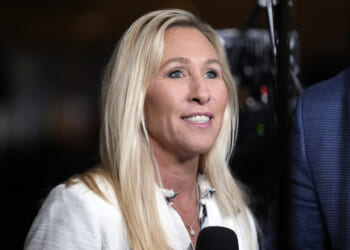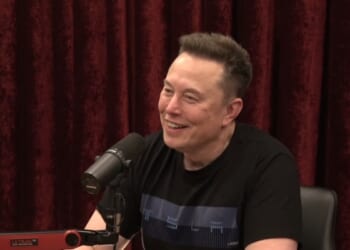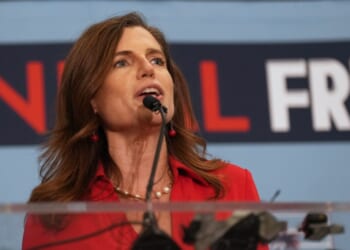In a move that might surprise some people, the Trump administration just made a deal with two major pharmaceutical giants — Eli Lilly and Novo Nordisk — to lower the cost of GLP-1 drugs, the class of wildly popular injections like Ozempic and Wegovy. The administration’s new pricing agreement could significantly reduce list prices for these drugs, making them far more accessible to the average American.
Conversations about lowering drug and prescription costs have been circulating for a long time, which makes the selection of this particular drug class for cost negotiation particularly interesting. Of all the medications out there — insulin, blood-pressure meds, antibiotics — it’s the trendy weight-loss shot that got the spotlight. So how did this medication become the frontrunner for lowering prices? A major factor is their popularity among influencers and celebrities, and the internet’s obsession with “miracle” weight-loss hacks. Red-carpet appearances and Instagram reels have boosted the drug’s rise, not medical conferences.
As always, cultural momentum matters. When the rich and famous start recommending something, their voices often drown out our own physicians, and the public soon follows. And in this case, the proof is in the polls: roughly one in eight U.S. adults has tried or considered a GLP-1 drug. So when President Donald Trump’s team targeted this specific medication for price cuts, they weren’t just addressing a health issue. They were tapping into an area where market demand is high; the results speak for themselves; the ability to lose weight quickly doesn’t have a political side; and perhaps losing millions of pounds as a nation will be the kickstart we need to become healthier overall.
In other words, it seems to be a move that makes sense in multiple areas — business, health, affordability, and political favorability. In the short run, the benefits are obvious. America is an overweight nation. Lowering the cost of weight-loss medication could help millions shed pounds and reduce obesity-related diseases like diabetes and heart disease. It’s the kind of immediate improvement that looks great in a press release — and to be fair, it could improve countless lives. Of course, Trump could focus on the myriad other drugs that are regularly prescribed in this country and prioritize price cuts on those. But the question is: if the root cause of many other illnesses (obesity) can be mitigated, will the need for the other medications decrease as well?
On the other hand, we don’t yet know the long-term effects of taking GLP-1s.
These drugs weren’t originally designed for casual weight loss — they were created for people with diabetes. And the question we need to ask of any new drug that ends up in the hands of more people is whether the risks are worth it.
Studies already show some of the side effects, from mild issues such as nausea and digestive issues, to more serious developments, like pancreatitis and kidney problems.
That’s not to say these drugs aren’t helpful. They absolutely can be, and have been, life-changing for some. But we’re still in the early days of understanding what happens when millions of people stay on them for years — and what happens if they stop taking them altogether. Here’s the bigger question: Even if GLP-1 drugs get cheaper, are we actually solving the obesity problem? Or are we just managing it with a quick fix because we have no appetite for anything that takes time, effort, dedication, and sacrifice?
We’ve been asking for lower drug prices across the board for years, but the obesity epidemic continues to balloon. The fact is that obesity itself drives much of America’s chronic illness. So, while cheaper medications help people manage conditions, the objective has always been about prevention. But even prevention isn’t what it used to be. Yes, the ideal habits for optimal health are to eat whole foods, exercise, stay hydrated, and get plenty of rest. However, it seems that today’s weight problem is less about willpower or diet and more about how, as a culture, we view food and health. Our mindset has shifted when it comes to results, and we need stronger incentives to correct a problem, even though living with poor health should be enough motivation.
Unfortunately, our system rewards treatment over prevention. And while lower prices on GLP-1s are progress, they also risk affirming the idea that the solution to obesity is pharmaceutical — not behavioral or cultural.
If we end up with millions of Americans on lifelong injections, are we truly healthier, or just more medicated? From a right-leaning political perspective, this issue is also fascinating, as conservatives tend to be the loudest advocates for personal responsibility, smaller government, and free-market solutions. Yet here we are, cheering on a government-negotiated deal that makes a highly commercialized drug cheaper for everyone, and sets personal responsibility aside as an afterthought.
Of course, the efforts on this matter aren’t all bad. The administration’s deal shows it’s possible to use policy leverage to drive prices down without heavy-handed regulation. It’s efficient, popular, and (for Trump) politically golden. But it also blurs the line between solving a national health issue and subsidizing a quick fix. If cheaper GLP-1s lead to less emphasis on nutrition, exercise, and public health reform, the short-term victory could become a long-term dependency — something we’ve seen time and time again.
There’s no doubt that Trump’s GLP-1 price deal is clever politics. It takes on Big Pharma, delivers tangible savings, and aligns with public demand. The deal could mark a turning point if prevention isn’t taken out of the equation. We still need a significant emphasis on healthier eating, better education, and structural changes that make it easier for Americans to avoid obesity in the first place. If not, we risk turning GLP-1s into the next insulin — another miracle drug we depend on instead of addressing why we need it so badly.
So yes, cheaper drugs are great. But the ultimate goal shouldn’t just be “Ozempic for All.” The end goal should be “Ozempic for None — Because We Don’t Need It.”















